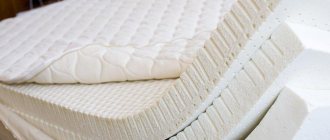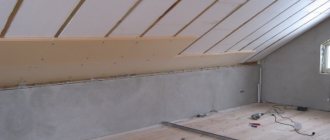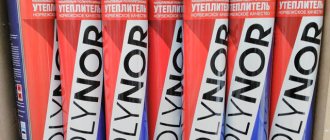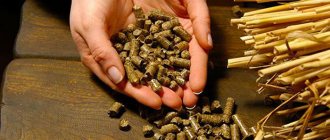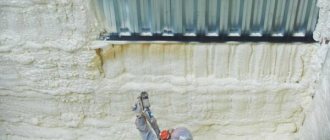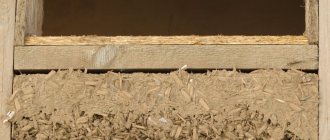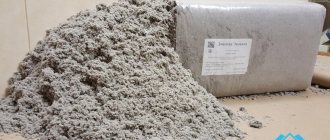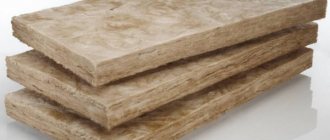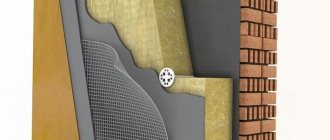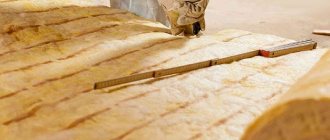What is ecowool? This is the collective name for thermal insulation materials that are made using special technology, often from recycled materials. The material cannot be called new: it has been used since about the middle of the last century and competes with modern types of thermal insulation.
Manufacturers position ecowool as an environmentally friendly material with high performance, which is located in the affordable segment of the construction market. Let's look at how relevant these statements are together.
Table of contents
What are we comparing?
Designed to keep you warm. Seamless installation. Not like fish in water Density and weight Does not burn or does not support combustion? Do you need a vapor barrier? Silence in the home Conclusion Ecowool is a modern thermal insulation material with a low shrinkage rate, good resistance to water, and has high sound insulation properties. A similar characteristic can be found about almost any thermal insulation product, but it is only possible to evaluate how effective the material really is by comparison. In this article we will try to compare ecowool with the most common insulation materials.
Ecowool
Main differences from other insulation materials
The main feature of ecowool is its average performance compared to other insulation materials. It retains heat well, if it is hygroscopic, it does not lose its properties when wet, is durable, and perfectly protects the apartment from noise transmitted through the air. But due to consumers’ poor knowledge of the properties of this material and complex insulation technology, many prefer basalt wool.
To find out which is better, ecowool or basalt insulation, let’s conduct a mini comparison.
- In terms of basic technical characteristics, the insulation materials are approximately equal.
- Both materials do not support open combustion.
- The service life is comparable.
- Due to the absence of seams, cellulose wool retains heat better.
- Ecowool can be used to insulate a surface of any shape and configuration - basalt will have to be cut to fit the protrusions and depressions.
- The insulation technology is much simpler with stone fiber wool.
- The cost of thermal insulation work when insulating a private wooden house is one third more expensive than glass wool insulation, and almost the same when using basalt fiber insulation.
General conclusion: with almost identical costs for insulating a house with cellulose and basalt wool, the owner of the home is freed from work on his own when purchasing cotton wool insulation (performed by professional workers). Ecowool loses to glass wool due to the high cost of work. Otherwise, the choice is up to the consumer.
What are we comparing?
For comparison, let's take insulation materials that are often used to insulate a house: basalt wool and fiberglass-based mineral wool. The choice fell on these materials, since their scope of application is quite wide. They are suitable for insulating walls, floors, roofs, soundproofing partitions, etc.
- Ecowool - 80% consists of cellulose fibers, the raw material for which is recycled paper. The remaining 20% is boric acid and borax. The latter is a fire retardant, which increases the fire resistance of the material. The insulation is made in the form of a loose mixture.
Insulation of the facade using ecowool
- Basalt mineral wool is made from straightened rocks with the addition of phenolic resins; the material is produced in the form of slabs.
Basalt mineral wool has a characteristic brown tint
- Fiberglass mineral wool is made from molten glass or sand. It has a fibrous structure. Often produced in roll form.
Personal protective equipment is required when working with fiberglass
Real consumer reviews we found on the Internet
To better understand the feasibility of ecowool insulation, you can refer to the reviews of people who have already used this material in construction.
Sergey. forumhouse.ru
I bought ecowool to insulate a country house. The workers who were involved in the construction recommended this particular material. The insulation does not require additional layers of vapor and waterproofing, which was the decisive factor. The house has been standing for 3 years now , I have no complaints about the insulation, only positive emotions.
Kirill. vk.com
I don't recommend ecowool. I lived in a house insulated with this insulation for 5 years When I changed my place of residence, the problems disappeared. The doctor said that the body’s reaction was provoked by cellulose (an allergy to paper and library dust).
Note that there may be a case of individual intolerance to the components, so before choosing thermal insulation it makes sense to consult a doctor to avoid unpleasant consequences.
Yuri. otzovik.com
Very pleased with the ecowool. The material fully complies with the declared characteristics, provides reliable insulation, is convenient to use and attracts attention at an affordable price. I found only one drawback: compliance with storage conditions. When exposed to a humid environment, the material becomes covered with a hard crust, which complicates further use.
Also, many users express concerns about the content of borax and boric acid in the insulation. In addition, dissatisfaction is caused by the use of special equipment, but this is a prerequisite for high-quality installation, which cannot be excluded.
Seamless installation.
Ecowool differs from “traditional” heat-insulating materials in the installation method. Basalt mineral wool and fiberglass are produced in rolls or slabs. They are cut into rectangular pieces and laid between joists, sheathing or rafters, depending on the place where the insulation is installed. Installation of ecowool is carried out using the “dry” or “wet” application method. Thanks to this, a continuous insulating layer is obtained without seams or joints. When laying mineral wool and other slab materials, the seams remain “cold bridges”.
The use of specialized equipment allows you to lay ecowool in hard-to-reach places
Ecowool is laid manually or automatically. Manual is more labor-intensive and does not always allow achieving the same insulation density in all areas. Automated installation is carried out through a blowing machine with a corrugated hose. “Wet” or “dry” application method is selected depending on the surface.
When it comes to installation, it is difficult to choose an undisputed leader. On the one hand, the seamless application method allows you to get rid of “cold bridges”; on the other hand, the installation process itself becomes more complicated. In addition, “wet” styling will require drying time (2-3 days).
Not like fish in water
The relationship between moisture and insulating materials can be described as complex. Here we need to return to thermal conductivity again. Under normal conditions, as we have seen, this figure is approximately the same for different thermal insulators, but everything changes when moisture gets on the insulation. All materials behave differently. The most moisture-sensitive material is basalt mineral wool; when moistened by 1%, its thermal conductivity increases by 9–8%. Fiberglass also does not tolerate water well, but recently products with enhanced moisture resistance have begun to appear.
Moisture distribution inside ecowool and mineral wool fibers
What's going on with ecowool? It absorbs water, but thanks to the fibrous structure, all the moisture gets into the fibers, and the empty space with air (which is the main heat insulator) remains free, as a result, when humidified to 20%, the thermal conductivity remains unchanged.
Ultimately, the water resistance parameter is relevant only in the event of force majeure (roof leakage, waterproofing breakthrough, etc.). Subject to compliance with building codes and regulations, water should not get on the insulation, so this indicator should not become decisive when choosing a particular insulation material.
Area of use
Ecowool is increasingly used for thermal insulation of objects such as:
- frame houses;
- ceilings, floors and ceilings;
- floors;
- walls;
- cavities, sinuses in attics and attics.
General scheme of use
In the future, experts predict an increase in the applicability of this promising material. As the number of successful applications and the qualifications of operators increases, the popularity of environmentally friendly, high-quality and relatively affordable material on the Russian market is sure to increase.
Density and weight
The higher the density of the insulating material, the greater its weight per unit area. With greater weight, the requirements for supporting structures increase. This is especially true when installing a roof. Also, in the case of ecowool, the density is affected by the uniformity of application.
Read about the features of choosing insulation for a roof in the article: “How to insulate a pitched roof.”
- Basalt mineral wool – 25 – 50 kg/m3 depending on the brand
- Fiberglass – 15 – 20 kg/m3
- Ecowool - 35 kg/m3 for horizontal structures and 65 kg/m3 for horizontal ones.
Thus, from the point of view of numbers, the materials do not differ much, but at the same time, applying ecowool to vertical surfaces with insufficient density can lead to subsequent shrinkage. Due to the specifics of application, the density in different areas is not the same.
Doesn't burn or doesn't support combustion?
Flammability is a parameter that you need to pay close attention to; the overall fire resistance of the entire building depends on it. According to GOST, there are 5 flammability classes: NG (non-flammable), G1 (low-flammable), G2 (moderately flammable), G3 (normally flammable), G4 (highly flammable).
Ecowool does not support combustion, so fire does not spread into the material
- Basalt mineral wool is NG, while slabs containing phenolic binders can emit toxic smoke.
- Fiberglass-based mineral wool is non-flammable, but at temperatures above 500 degrees the material begins to melt, so the flame can spread to other objects.
- Ecowool - G2, upon contact with an open flame, the insulation burns, but does not support combustion (the fire does not spread deep into the material). The advantage is the absence of toxic smoke.
Based on the results of comparing flammability classes, ecowool cannot be called the most fire-resistant material. It should not be used near chimneys, stoves or fireplaces.
About technology
Ecowool is a cellulose insulation material for new construction and renovation.
All components of this material are non-toxic, non-volatile, natural components harmless to humans.
The service life of ecowool, according to world experience, is more than 50 years.
Doesn't rot. Repels rodents. "Breathing."
The required thickness for the floor and ceiling is 200mm; on walls – 150mm. Laying density 40-80kg/m3.
Our company has all the necessary equipment and materials for high-quality insulation of house structures using ecowool
Quality control of work is carried out using thermal imaging equipment and it is free for you!
Ecowool is a unique thermal insulation material made from environmentally friendly material. It is used for insulating buildings for almost any purpose, including private houses.
Four main installation options, a wide range of density and heat and sound insulation properties, selected in each individual case, as well as a high rate of home insulation are the reasons why ecowool occupies almost 70% of the market for thermal insulation materials in Western countries.
In our country, ecowool insulation is only gaining momentum, although it is an almost ideal option, taking into account the climate and the prevalence of raw materials.
Cellulose is a abundant and cheap material. Divided into fibers and fluffed up, it acts as insulation no worse than mineral wool or vermiculite. Among the obvious advantages: cellulose weighs little and is an environmentally friendly material. However, using it in its pure form in construction is not practical and even dangerous.
The insulation consists of 80% cellulose, fibers obtained from recycling waste paper. The remaining 20% are additional components that make ecowool resistant to fire and biological factors that can damage it.
To prevent the fibers from scattering, a monolithic layer of insulation is formed using lignin, a natural biological glue that binds the fibers together, but does not contribute to creasing of the material.
The fibers are combined in a chaotic manner, forming a lush, voluminous structure with excellent thermal insulation properties. It does not wrinkle or compress under its own weight. The same lignin is used as a binder in the wet method of applying ecowool.
When adding a small amount of water, ecowool easily sticks to the insulated base and does not fall off after drying, even after a significant period of use.
Borax is used as a fire retardant to reduce the fire hazard of cellulose. A natural material that can completely eliminate the risk of cellulose fire. Even when directly exposed to flame, the material does not ignite, but only slightly smolders without maintaining combustion.
It does not emit harmful substances when burning and practically does not smoke. In full compliance with GOST 30244, the fire safety group of ecowool is G2, group D2 for smoke and B2 for ignition.
The presence of boric acid makes it impossible for any vegetation or even living creatures to gain a foothold in the insulation layer. During the entire service life, ecowool does not rot or decompose under the influence of bacteria. Even rodents avoid it, simply because boric acid affects their sense of smell, not poisoning, but repelling.
Characteristics
For clarity, you need to compare the characteristics of ecowool with other popular insulation materials.
Ecowool largely combines the good features of other insulation materials, while having a number of features that are important to consider when designing a private home:
- In production, natural material is used - cellulose;
- Affordable price in relation to the closest analogues;
- Seamless insulation that fills the entire volume allocated for it;
- If the filling density is selected correctly, it will not wrinkle over time;
- Moderate moisture absorption, the bulk of the moisture remains in the surface layer;
- With equal ease it takes away excess moisture from the air and gives it back - a “breathable” material;
- An ideal solution for an aerated concrete house or log house when using vapor-permeable building materials;
- Suitable for manual and automated installation;
- High sound absorption coefficient in the audible range. Absorbs and absorbs waves.
Ecowool is laid in pre-prepared niches and voids formed by lathing and several layers of vapor barrier material and the surface of the insulated base. The minimum effective thickness of the material is 45-50 mm. The maximum is limited by the design features of the insulated room.
The insulation layer is calculated based on the thermal resistance of the walls, ceiling or roof slope. As a result, the resistance of the building envelope must meet the requirements of the project and the established standards for the region of construction.
Ecowool is transported to the construction site in compressed form, causing it to lose up to 3-5 times in volume. Before use, it must be fluffed up and returned to its original volume and, accordingly, density.
The task of insulating a private house with ecowool comes down to uniform distribution of the material over the insulated surface, followed by lining it with a protective vapor-permeable layer.
Automation of the ecowool laying process is carried out using special equipment. The compressed cotton wool is broken up by a screw and finally fluffed up under the influence of a strong stream of air.
It is transported with the same volume of air from the preparation site to the insulation point at the construction site. Due to the lightness of cellulose and its structure, it can be moved pneumatically through a pipeline up to 200 meters horizontally and up to 40 meters upward.
Blowing is carried out gradually, starting from the bottom up for walls or from one of the corners evenly along a horizontal surface. The outlet of the transport pipeline is abutted against an already laid layer of insulation to minimize scatter and to control density.
In a private house, using ecowool, you can insulate roofs and walls, floors between the first and subsequent floors, the attic and roof slopes. The exception is the ceiling above the basement and the base of the house above the foundation, where there is no way to effectively remove moisture.
The principle of insulation is extremely simple. The frame of the insulation belt with cells of arbitrary width and length is formed from wooden logs and bars. The standard pitch for joists and sheathing is 600 mm, the length can reach 6 meters.
Floor
The logs form ideal cells for laying ecowool. For floors formed by slabs, additional sheathing will be required. The base must be waterproofed, preferably with a vapor-permeable membrane.
To insulate the ceiling with ecowool, it is necessary to prepare niches hemmed from below between the sheathing beams for filling with insulation. For floors with joists, the insulation is laid directly between the joists to which the sheathing is attached.
Is vapor barrier necessary?
A vapor barrier protects the insulation in a wall or roof from vapors that escape from the house. Warm air, meeting cold air, condenses at the dew point, which usually falls right on the insulation. As we have already figured out, moisture does not have the most favorable effect on thermal insulation material. You can often come across the opinion that when insulating with ecowool, a vapor barrier is not needed. This is not entirely true, because moisture may not damage the insulation itself, but will cause rotting of other structural elements (walls, sheathing, etc.).
- Basalt mineral wool - vapor barrier needed
- Fiberglass-based mineral wool - vapor barrier needed
- Ecowool - it is recommended to use vapor barrier in places with high humidity.
What is ecowool made from?
Is ecowool harmful? This question concerns us above all. After all, when insulating the internal structures of residential buildings, some other materials can emit harmful fumes in the premises. You can also hear about ecowool that it contains dangerous compounds. We hasten to dissuade you. Ecowool GreenWool is highly environmentally friendly. In its production, only raw materials that are safe for health are used - paper printing products.
Traditional composition of ecowool for insulation:
- Cellulose makes up 81% of the total mass;
- Boric acid is used in ecowool as an antiseptic to protect against fungus and mold and makes up 8%;
- Borax is used as a fire retardant and makes the ecowool material inert to fire. Its volume is 11%.
Fire-fighting and antiseptic components of natural origin are found in the natural environment in free form in the form of mineral salts. These additives are non-toxic, do not cause skin irritation, do not attract insects, and do not affect other building materials.
Therefore, the question: is ecowool harmful to health disappears on its own.
Conclusion
Based on the results of comparison with other thermal insulation materials, we can highlight the positive and negative aspects of ecowool.
Advantages:
— Seamless application does not form cold bridges.
— Adhesion to the frame provides increased heat and sound insulation.
— Thermal conductivity does not increase when wet
— Good vapor permeability (0.35 mg/(m h Pa)
— Filling hard-to-reach places by blowing cotton wool
— Environmentally friendly - does not contain formaldehyde resins, consists of 80% cellulose
Soundproofing
GreenWool is the best ecowool in terms of sound insulation qualities:
- A 25 mm layer of GreenWool can absorb 10 dB of sound;
- An 80 mm layer of mini-slab is capable of absorbing 10 dB of sound.
To ensure high-quality sound insulation in small apartments, there is a method of using ecowool using the technology of applying plaster to concrete, wood or brick surfaces. In this case, the material is laid using smooth spatulas in a 10-12 mm layer. One bag of insulation is enough for 6 square meters. m of surface.
The sound insulation properties of GreenWool ecowool have been confirmed by tests at the Acoustic Research Laboratory (Moscow). Evidence of this is the certificate of conformity SNiP 23-03-2003 and GOST 23499-2009. Based on the test results, ecowool is recommended for soundproofing of residential, public, and industrial buildings.
